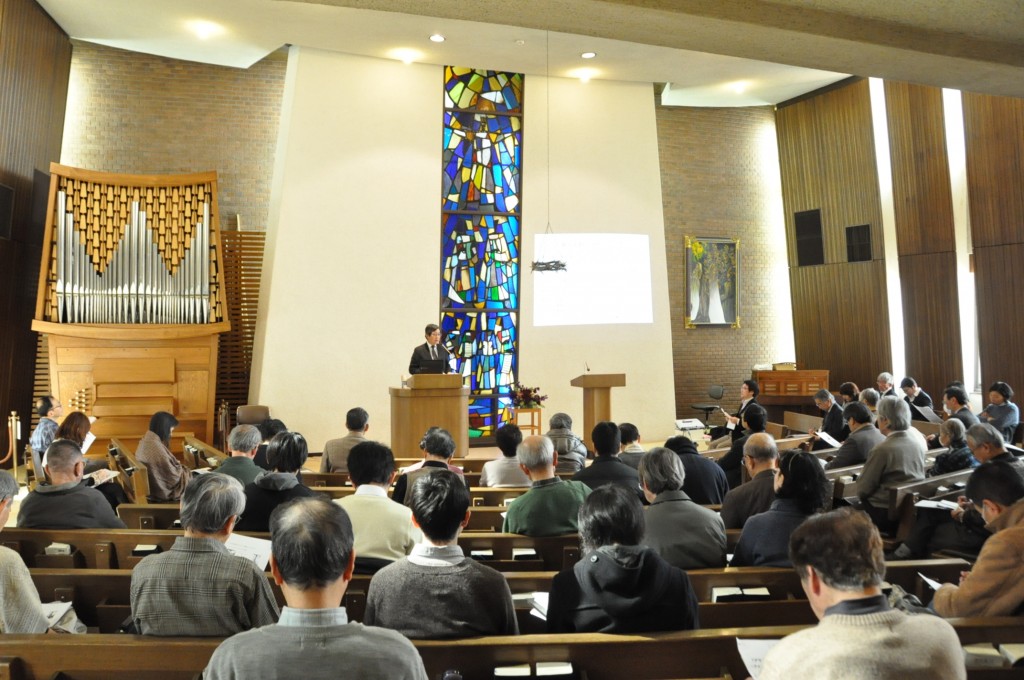Center for Interdisciplinary Study of Monotheistic Religions(CISMOR)Doshisha University
> Public Lectures > Public Lecture with The Society of Near Eastern Studies in Japan Egypt on the eve of “Amarna”―Thebes at the end of the reign of AmenhotepIIIPublic Lectures
Public Lectures
Public Lecture with The Society of Near Eastern Studies in Japan Egypt on the eve of “Amarna”―Thebes at the end of the reign of AmenhotepIII
| Date: |
2013/02/09 13:00− 15:00 |
|---|---|
| Place: | Divinity Hall Chapel, Imadegawa Campus, Doshisha University |
| Lecture: |
Jiro Kondo Professor of Faculty of Letters, Arts and Sciences, Waseda University Director of Institute of EGYPTOLOGY, Waseda University |
| Summary: | |
|
The religious reform which instituted Aten as the only god is called the Amarna Reform. Amenhotep IV changed his name to Akhenaten, meaning “beneficial for Aten,” in establishing a monotheistic religion that called for worshipping the sun god Aten as the only god. While it is known from the description of Exodus that Judaism was founded by Moses in later years, the argument that attributes the beginning of Judaism to the Aten cult is attracting greater attention nowadays. Many research efforts have been made to explore the resemblance of the Aten cult to Christianity, such as the similarity between the Hymn to Aten and Psalms. Six years ago, the tomb of Userhat, which dates to the last days of the reign of Amenhotep III, was discovered. Professor Kondo discussed the social situation during the Amarna period, the situation in Thebes before the capital was moved to Amarna, the characteristics of Amen, the god of Thebes, and how Amenhotep III dealt with the priests of Amen who became too powerful, by showing slides of the excavation in which Professor Kondo participated. The reign of Amenhotep III corresponds to the second half of the late Eighteenth Dynasty. Hatshepsut was one of the few female pharaohs of Egypt. The last pharaohs of the Sixth, Twelfth and Nineteenth Dynasties were female, and Cleopatra, too, was the last pharaoh of the Ptolemaic Dynasty. Unlike them, however, Hatshepsut was not the last pharaoh of the dynasty. Probably, she was installed as a pharaoh as a last resort, due to failed reigns of the preceding male pharaohs. There must have been four or five pharaohs during the 31 or 32 years between the end of the reign of Amenhotep III around 1350 BC and the beginning of the reign of Horemheb, but the names of these pharaohs were nowhere to be seen and the name of the pharaoh engraved on tomb KV55 was scraped off. While the person wearing leopard fur and in charge of the funeral of the late pharaoh was considered to be a successor to the pharaoh, the name of Ay was removed from the list of pharaohs, and Horemheb, a commander in chief of the army who earned the trust of Tutankhamun, was openly recognized as successor to Tutankhamun, not Ay. A female pharaoh is supposed to have preceded Tutankhamun, and she could be Queen Meritaten, the daughter of Akhenaten. Though the Amarna period of the Eighteenth Dynasty saw the prevalence of monotheism, this period was treated as if it had never existed: there seems to be a gap in the ancient history of Egypt. Statues of lioness-headed goddess have been discovered in many parts of the world. In Egypt, for example, the statue of the goddess Sekhmet dating to the reign of Amenhotep III was unearthed from the Luxor Temple. Sekhmet was the wife of Ptah, the guardian god of the north port, and they had a son, Nefertem. While the reason why these goddesses have the head of a lioness remains a mystery, the family structure consisting of a main god (father), a powerful goddess (mother), and another powerful god (son) can be also seen in the relationships of Osiris (father), Isis (mother) and Horus (son), and of Amen (father), Mut (mother) and Khons (son). It is commonly accepted that the Amarna period was an exceptional era of Egyptian history when the only god was worshipped and after the period was over, the Amen cult regained its prominence, but it was not the case. In reality, the Amen cult, as well as the Ptah cult at Memphis, and the sun-god cult had been behind the Aten cult of the Amarna period since the reign of Amenhotep III. In Thebes, the priests of Amen became so powerful that a movement arose to stop them by using the opposing group in the northern part of the country. While the Great Temple of Ptah in Memphis in the northern part of Egypt, was destroyed and we can see only its ruins today, this temple was built on almost the same scale as the Temple of Amen in Thebes in the southern part of the country. The priests of Ptah played a part in controlling the power of the priests of Amen in Thebes, and some priests of Amen were even named Ptah. In order to prevent the priests of Amen from abusing their power, the pharaoh appointed all the chief priests throughout Egypt and took various other measures including installing a statue of the lioness-headed goddess, the wife of Ptah, in the Temple of Amen in Thebes, of all things. It is likely that the pharaoh established the capital city of Amarna midway between Memphis and Thebes with the intention of keeping an equal distance from these two traditional, mutually opposing groups that had almost the same level of presence, thereby removing and offsetting their influence. The fact is not that ancient Egyptians returned to the polytheistic religious practice after the Amarna period: rather, this period should be understood as a “turning point.” What then, was the Aten cult in the first place? This monotheistic cult may have been introduced as a drastic means to “initialize” the Amen cult that had become too powerful and to strike a right balance between Thebes and Memphis. Even if this was the case, however, Akhenaten’s attempt ended in failure. It seems that he was so fanatic that his reforms led him elsewhere, causing him to deviate from his original purpose of depriving the priests of Amen of their power. (Yasuhiko Sato, Research Assistant, Graduate Student of School of Theology, Doshisha University) |
|
|
*Admission Free, No Reservation Necessary. Hosted by: The Society of Near Eastern Studies in Japan CISMOR Co-hosted by: School of Theology, Doshisha University |
|
|
Program(Japanese) |
|

